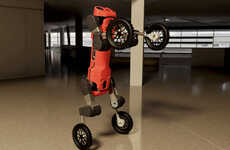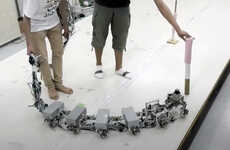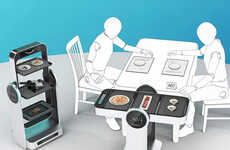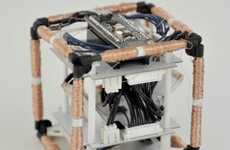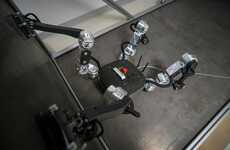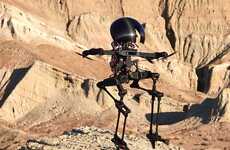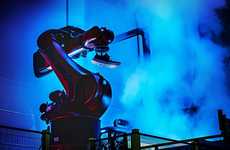
This Rolling Robot Can Flatten to Negotiate Obstacles
Rahul Kalvapalle — August 3, 2016 — Tech
References: fh-bielefeld.de & newatlas
A group of students working out of the Computing Engineering department over at the Bielefeld University of Applied Sciences in Germany have developed a truly spectacular rolling robot, named the Ourobot, that is designed to be fully capable of altering its own shape in order to be able to negotiate obstacles of different shapes and sizes.
Named after the Ouroboros, an ancient Egyptian symbol that comprises a snake curled around in a cricle shape, this particular rolling robot consists of a dozen linked segments, with each holding its own motor and pressure sensor. As a result of this setup, the rolling robot can move like a regular wheel on flat ground, but can flatten down in order to climb over objects.
The rolling robot is truly a spectacular engineering innovation that could be of use in a wide array of industries including manufacturing, transportation and military.
Named after the Ouroboros, an ancient Egyptian symbol that comprises a snake curled around in a cricle shape, this particular rolling robot consists of a dozen linked segments, with each holding its own motor and pressure sensor. As a result of this setup, the rolling robot can move like a regular wheel on flat ground, but can flatten down in order to climb over objects.
The rolling robot is truly a spectacular engineering innovation that could be of use in a wide array of industries including manufacturing, transportation and military.
Trend Themes
1. Shape-shifting Robots - The development of robots capable of altering their shape to navigate obstacles presents opportunities for disruptive innovation in various industries.
2. Linked Segments - The use of linked segments in the design of rolling robots offers potential for disruptive innovation in robotics and automation.
3. Motor and Pressure Sensor - The integration of motors and pressure sensors in rolling robots opens up possibilities for disruptive innovation in sensor technology and robotic locomotion.
Industry Implications
1. Manufacturing - Shape-shifting robots could revolutionize manufacturing processes by efficiently navigating obstacles and improving automation capabilities.
2. Transportation - The development of rolling robots with shape-shifting capabilities has the potential to disrupt transportation by enhancing mobility and adaptability in different environments.
3. Military - Shape-shifting robots could have disruptive applications in the military sector, enabling versatile and agile robotic systems for reconnaissance and obstacle traversal.
1.1
Score
Popularity
Activity
Freshness


